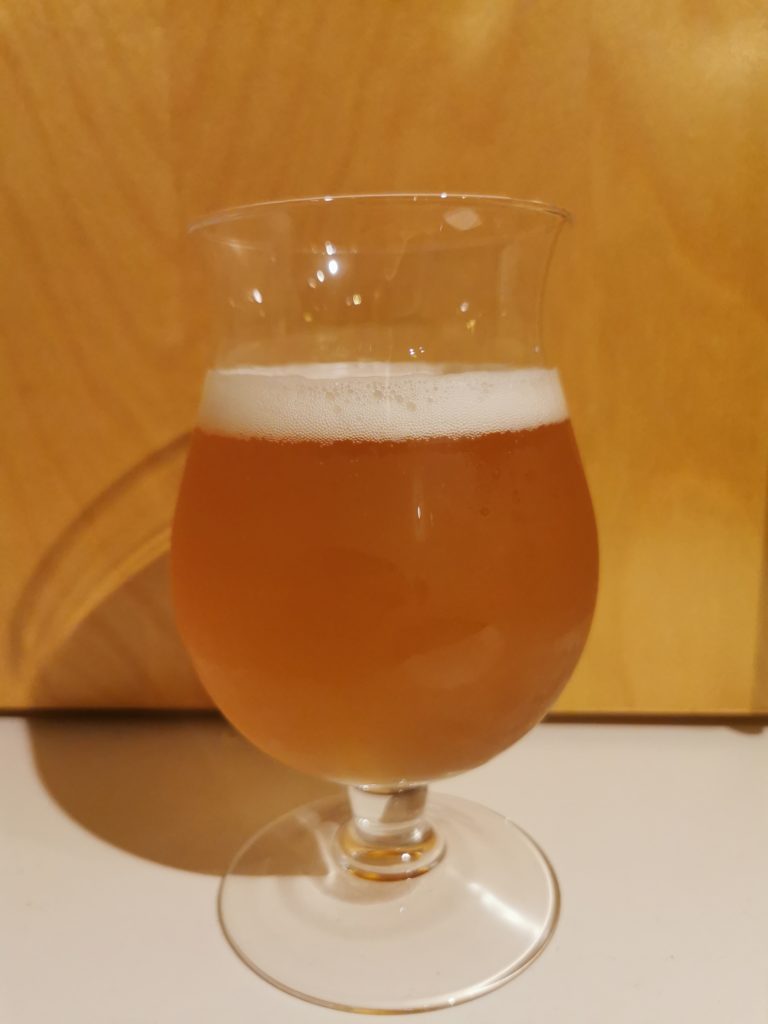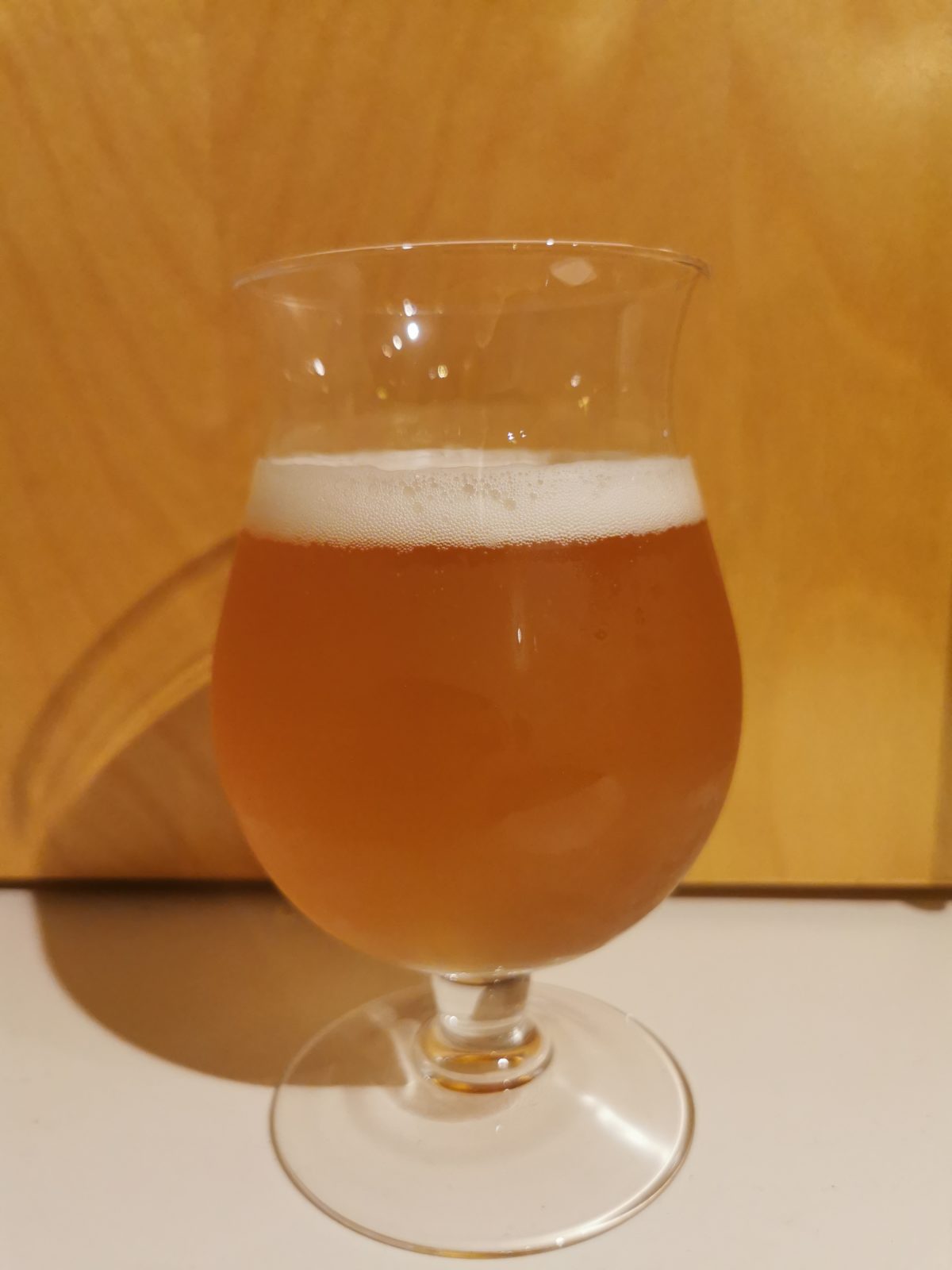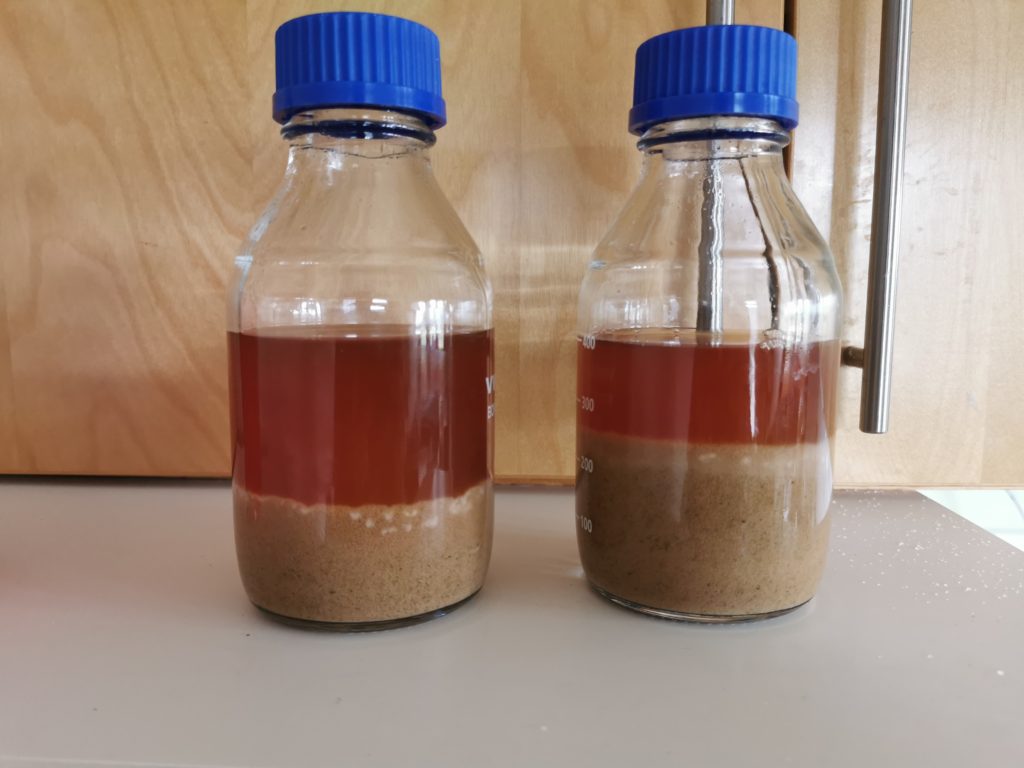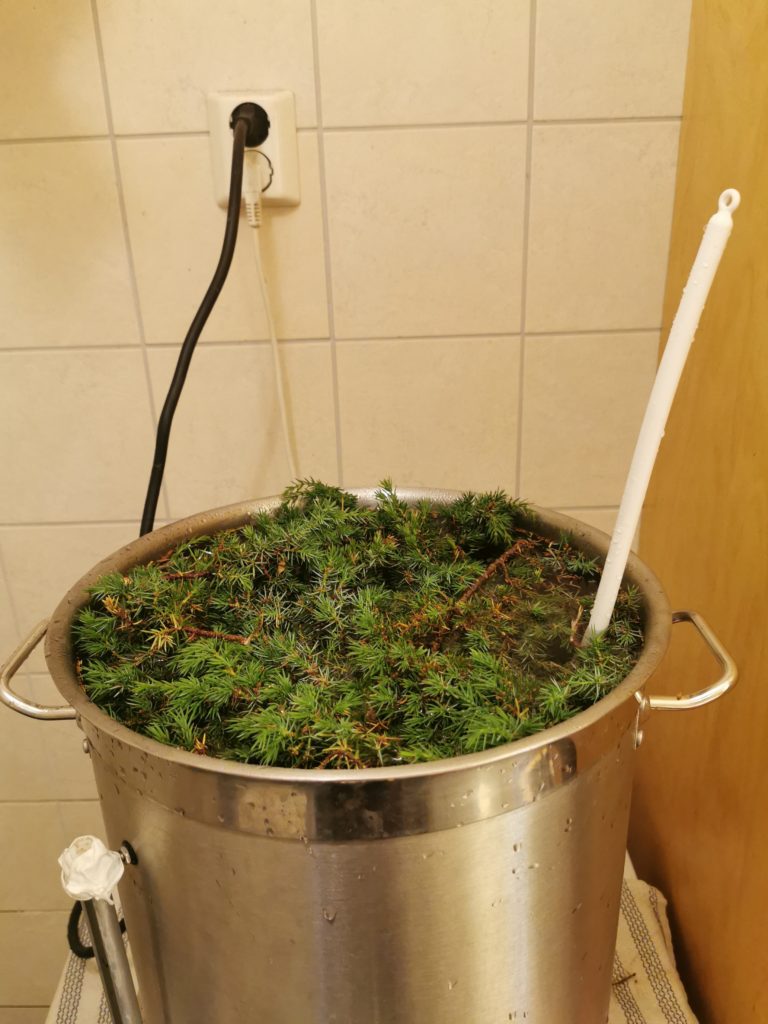My latest beer was my first raw ale. This means that it is not boiled after the mashing. Obviously, it is nice to save the time spent boiling, but it increases the risk for contamination. Moreover, it turns out that I still ended up spending a lot of time for the brewing.
The beer I was making was an attempt of recreating the beer made in Hornindal as described in the awesome book “Gårdsøl” by Lars Garshol. Since, I don’t have a large farm and room for lots of equipment I decided to modify the process a bit. Both to make it easier for myself and to reduce the risk of contamination.
My idea was that the less equipment I used and the less I transferred the beer around, the less the risk of contamination would be. I therefore decided to do the mashing in the pot used for boiling the junipers. Unfortunately, I had thrown away my bag for the brew in the bag procedure. To my surprise and delight, that was not a problem at all. My process and recipe was as follows:
- Fill the pot with juniper and bring it to a boil.
- Boil for 15 minutes. Make sure to put things needed for the rest of the process inside the boiling einerlog (juniper tea) to disinfect it.
- Take out most of the juniper and wait for the temperature to drop to mashing temperature . Some Juniper is left to function as a filter when the wort is tapped.
- Before adding the malt put 50 grams of Saaz hops in a disinfected bag in front of the wort outlet. This will be an extra filter in addition to the juniper.
- Add 4kg of pilsner malt and 4kg of pale ale malt. The mashing temperature is 74° C and the duraiont is one hour.
- Tap the wort and wait for the temperature to reach 38° C and add the kveik. Fermentation should be done in two days.
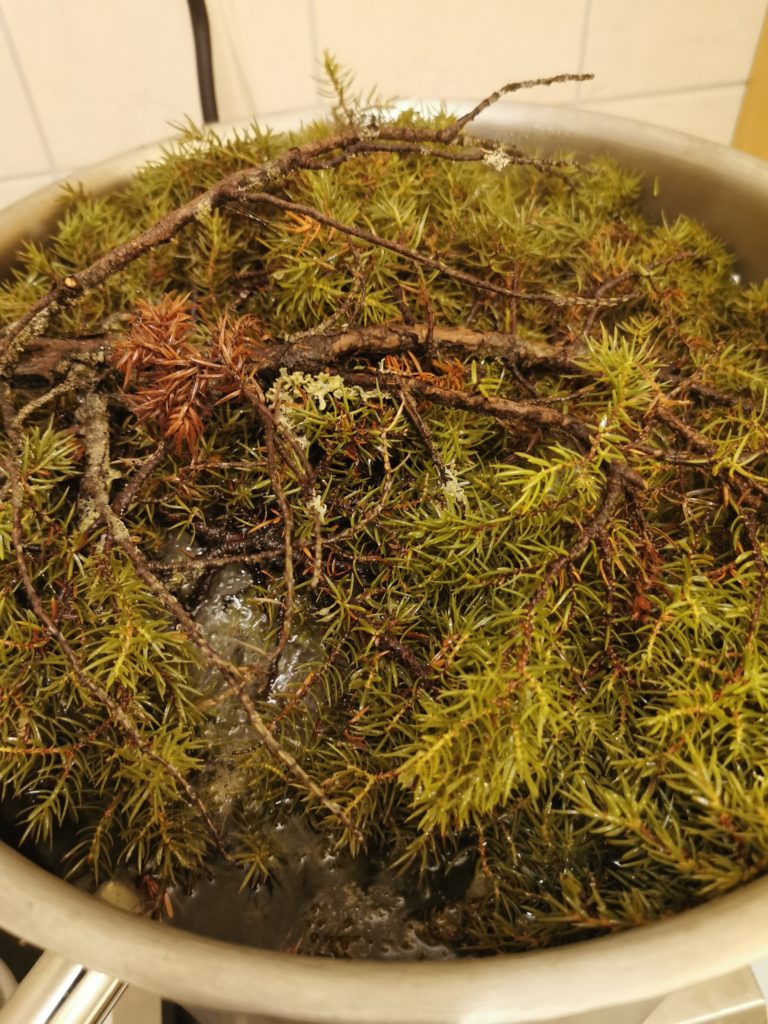
Of course things did not go as planned. Everything was fine until I started the mashing. I added the malt when the temperature had dropped to 77° C. To my surprise this made the temperature go all the way down to 70° C. In a response to this I switched on the plate to heat the mash. However, I think the temperature measurement was a bit off. Because the temperature quickly rose to 81° C. At which point I switched off the plate and crossed my fingers.
The next surprise was when I was going to add the yeast. Since I hadn’t disinfected the wort cooler the temperature fell way too slowly. I therefore decided to go to bed and drop in the yeast before going to work. Due to this the kveik ended up being out of the fridge for more than 15 hours before I finally added it to the wort. This came on top of it having been transported for 2 days in the post before arriving in my post box. I could only pray it was as robust as rumors would have it.
I am not sure if it was the treatment of the yeast or the high mashing temperature, but as can be seen from the plot above, the kveik did not provide the fast fermentation it’s known for. In the end I had to tap the beer at an SG far above the target of 1.018, to serve it to friends coming over. Despite the trouble the end result was very good and got lots of praise. Although, we all agreed it was a bit sweet.

Luckily, the story of this beer does not stop here. The next weekend I wanted to have a sip of the beer. When I started tapping, I got quite surprised to see that the keg pressure had increased. I checked the CO2 regulator and it was off. My hopes were high as I eagerly took a sip. To my delight my suspicion was correct, the beer had fermented in the keg. What I now had in my hand was a beer with an amazing balance between exotic fruity and malty taste. The overly sweetness was gone and the beer was now a perfect summer ale. Due to the pressure the beer had also been nicely carbonated. I know farm house ales should not be this carbonated, but I really don’t care as I am quite certain this is the best beer I have made so far.
I top harvested some of the yeast during the fermentation and I am very eager to see if I can recreate this amazing beer. With all my mistakes it may turn out to be challenging, but I will try my best.
